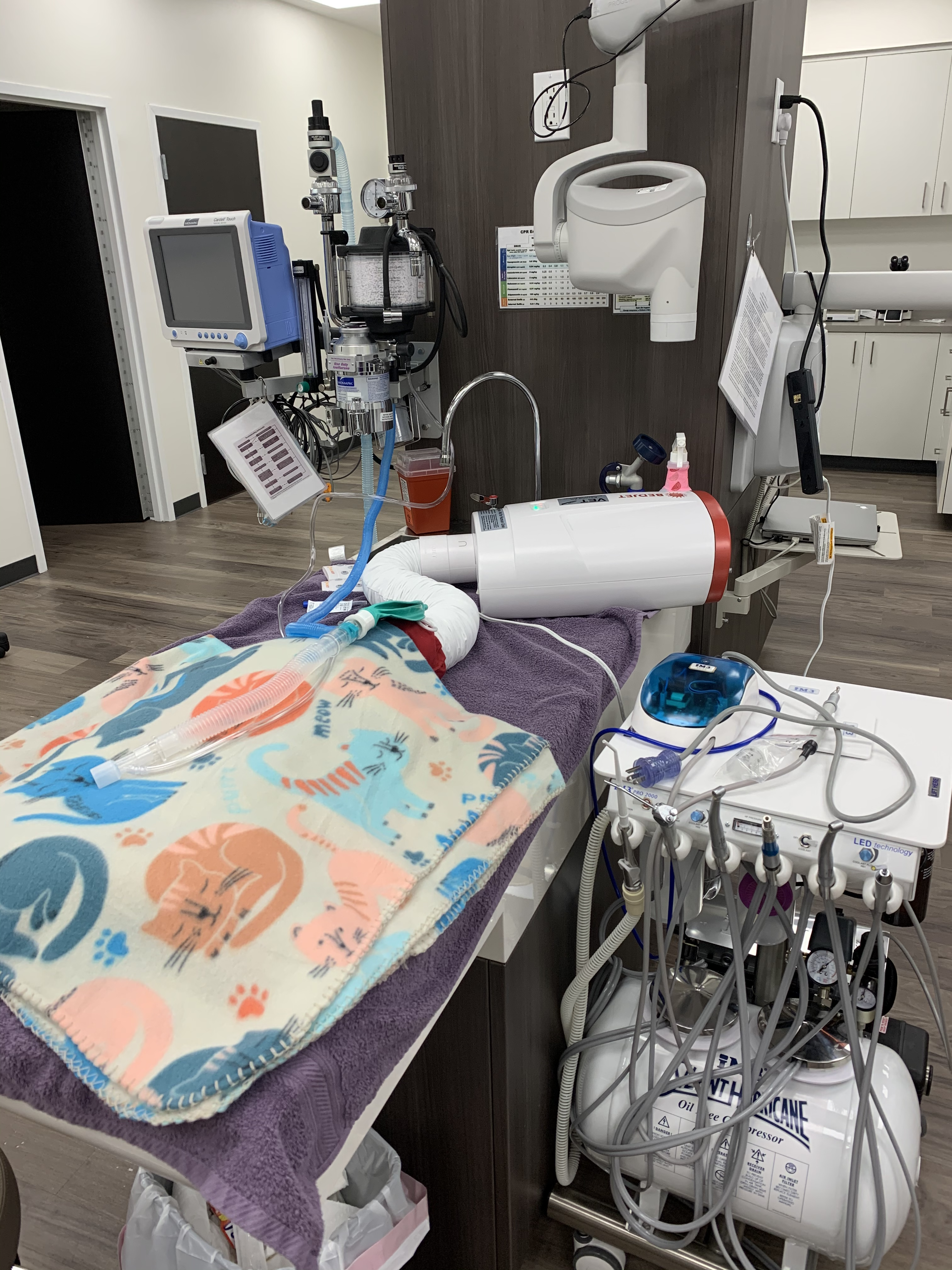 Prevention of periodontal and dental disease begins at the first kitten visit or the first visit for a new adult patient at Cat Care Center. By age three, many cats have significant gingivitis and many also have periodontal disease. It is a slow progressing but serious disease that causes pain and affects their overall health and wellbeing. Cats often will not show signs of oral discomfort. Because the pain associated with dental problems comes on slowly over time, they simply learn to adapt. That is why it is important that all cats are seen by a veterinarian annually to assess their oral health.
Prevention of periodontal and dental disease begins at the first kitten visit or the first visit for a new adult patient at Cat Care Center. By age three, many cats have significant gingivitis and many also have periodontal disease. It is a slow progressing but serious disease that causes pain and affects their overall health and wellbeing. Cats often will not show signs of oral discomfort. Because the pain associated with dental problems comes on slowly over time, they simply learn to adapt. That is why it is important that all cats are seen by a veterinarian annually to assess their oral health.
What is Proper Dental Hygiene for Your Cat's Teeth?
There are several ways to ensure proper cat dental care. All of them involve diligence and commitment from you as a cat owner. Your feline friend will not tell you if they need dental care, so it is up to you to proactively address their needs.
- Good nutrition is the foundation for good dental health.
- When possible, establish a cat teeth cleaning routine when your cat is young - ask us about our Veterinary Oral Health Council accepted products! Brushing is the gold standard of home dental care, but there are many other dental hygiene products available if brushing does not fit your lifestyle.
- Schedule semi-annual exams for cats, or at the recommendations of your veterinarian.
- Watch for signs of possible dental issues, such as bad breath.
- Tell your veterinarian during their checkup about any behaviors you've noticed or concerns you have (chewing on odd objects, pawing at the mouth, anorexia, among others)
- Early prevention is essential to minimize serious dental issues.
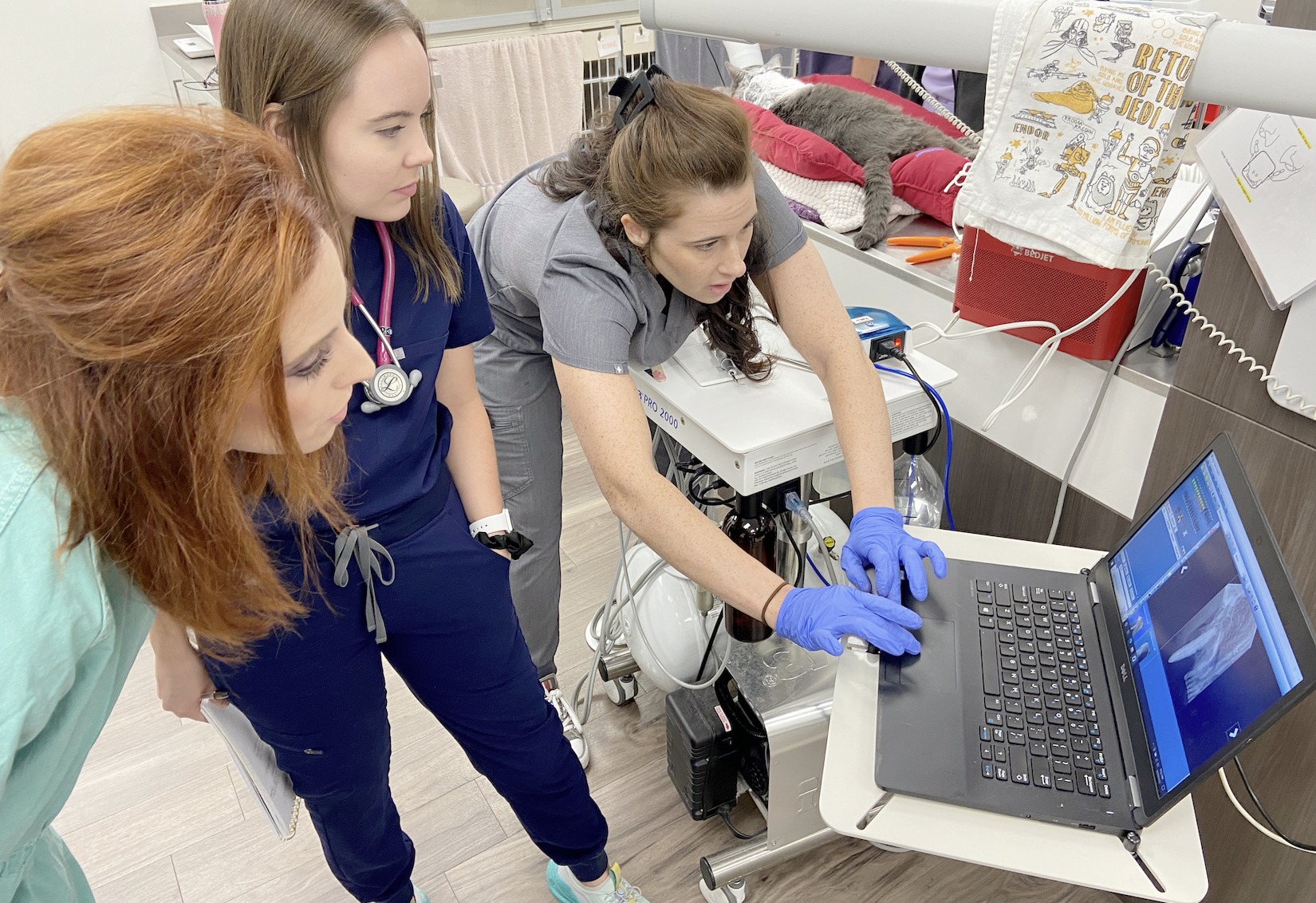 Proper cat teeth cleaning consists of an oral exam and x-rays under anesthesia in order to properly diagnose any dental disease that may be present. Much of the dental disease in cats is under the gum line. Many cats develop feline resorptive lesions in their teeth. These are cavity-like lesions on the part of the tooth above or at the level of the gumline. These may also develop below the gumline. These lesions are produced when the cat's own cells destroy the tooth structure, and it can be quite painful. In these cases, the treatment usually requires extraction of the affected tooth/teeth. Not all cats have resorptive lesions, but as they age, these become much more common. We don't know exactly what causes these lesions to develop, although some say it's plaque and bacterial accumulation. Ultimately, through research, resorptive lesions are still termed idiopathic, meaning we don't quite know the true cause. Only a thorough exam involving x-rays taken by your veterinarian under anesthesia can safely determine if your cat is living with these lesions. Treatment is curative! However, cats who produce these lesions are likely to produce more in their lifetime and will likely require annual dental care.
Proper cat teeth cleaning consists of an oral exam and x-rays under anesthesia in order to properly diagnose any dental disease that may be present. Much of the dental disease in cats is under the gum line. Many cats develop feline resorptive lesions in their teeth. These are cavity-like lesions on the part of the tooth above or at the level of the gumline. These may also develop below the gumline. These lesions are produced when the cat's own cells destroy the tooth structure, and it can be quite painful. In these cases, the treatment usually requires extraction of the affected tooth/teeth. Not all cats have resorptive lesions, but as they age, these become much more common. We don't know exactly what causes these lesions to develop, although some say it's plaque and bacterial accumulation. Ultimately, through research, resorptive lesions are still termed idiopathic, meaning we don't quite know the true cause. Only a thorough exam involving x-rays taken by your veterinarian under anesthesia can safely determine if your cat is living with these lesions. Treatment is curative! However, cats who produce these lesions are likely to produce more in their lifetime and will likely require annual dental care.
Other dental issues in cats include gingivitis and periodontal disease that may require medication and/or dental work to alleviate the pain. The importance of annual exams cannot be understated! In order to remain healthy, dental care is something you should trust to your veterinarian.
Featured Quote:
Video Transcript:
Hi, my name is Lacie Lee and I'm a feline veterinarian at the Cat Care Center of Baton Rouge. Did you know that February is Pet Dental Month? Here at the Cat Care Center, we are going to do a series of videos answering your questions on feline dental health.
Does my cat need yearly dental cleanings?
We know that oral disease can significantly affect the welfare of our cats as well as their longevity. We also know that their mouths can be a source of bacteria and that this can, in turn, make it difficult to manage some of the other diseases that they may get. Thankfully, in veterinary medicine we have governing boards that put out guidelines, and those guidelines help us better serve you and your favorite felines. The American Animal Hospital Association and the Feline Veterinary Medical Association have guidelines on dental disease in cats. According to AAHA - or the American Animal Hospital Association - all kittens and new adult cats need to have thorough oral cavity exams. These also need to happen consistently at every examination thereafter.
What do we look for on your kitten’s first visit?
I'm looking at the way kittens’ teeth line up. Do they line up well? Do I see any gum diseases? Do I see any missing teeth? I'm looking for the same thing in my adult cats. According to the American Animal Hospital Association, by the time a cat is one year of age, he or she should have had a first dental cleaning. This is an anesthetized procedure that includes scaling, polishing, and full oral radiographs to determine where the cat’s oral health lies. And statistically, 70 percent of cats already have significant periodontal or oral cavity disease by the time they’re three years old.
How do we examine cats’ mouths without causing anxiety?
Here at the Cat Care Center, we are a Gold Status Cat Friendly Practice. That means that we do all of our things according to what's best for our cats. And sometimes what's best for our cats is to get a good oral cavity examination using mild sedation. That’s okay because we don't want their veterinary experience to have any negative associations.
This is LM. LM is very nervous for her oral cavity exams. So what we're going to do is have my technician Sandy with me to offer her treats. And when I do an oral cavity exam on the cat, I do my best to avoid pulling whiskers and lips.
As a feline veterinarian, I've learned over the years that you have to be quick when you're looking at the oral cavity of a cat. Again, coming from behind, you have to ask the cat to let you gently lift. We reward her and give her breaks.
I don't want to grab cats’ heads. I want to be as gentle as possible, giving them scratches to let them know they’ll be okay. I do have to get a peek, though, so I gently touch right below their cheekbones. And oftentimes if you tilt the nose up, you can see all the way to the back of her oral cavity into the caudal fossas back there to see if there's any inflammation. My eyes have been trained to be quick for the sake of the cat. And then we'll do a thorough oral cavity examination when she comes in for her dental cleaning and procedure, and that's where a little bit of anesthesia is involved. At that point, we'll get a really good look at those teeth and a good look below the gumline.
I hope you guys enjoyed the first video. Thanks for watching. Check out our website, www.catcarecenter.com. Under the service tab cat dentistry, you'll find a bunch of information, much of which I went over today.
How Often is it Necessary to Have My Cat's Teeth Cleaned Professionally?
The recommended frequency of a CORE Procedure (Comprehensive Oral and Radiographic Examination) with cleaning and polishing depends upon several factors such as: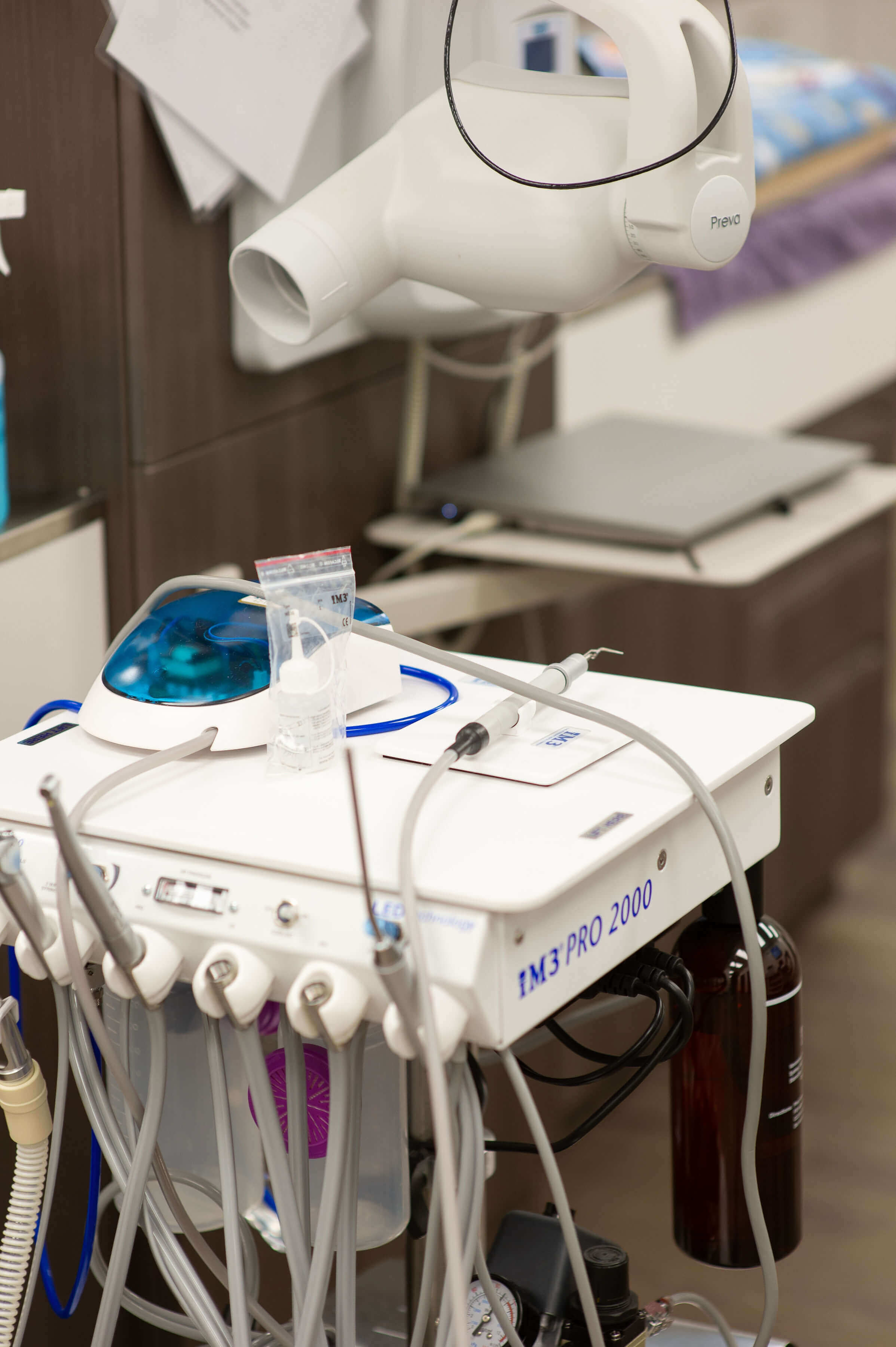
- Age
- Genetics
- Diet
- Lifestyle
- Existence of other health conditions
However, regardless of signs or symptoms, your cat should have a dental checkup annually at a minimum. While you should be looking at your cat's teeth periodically yourself, it is easy to miss the types of problem signs that a trained and experienced veterinarian will pick up on. It is significantly easier to address and resolve dental issues that are spotted early, compared to dental issues that go unnoticed and are allowed to further develop. Therefore, a proactive approach to feline dentistry is recommended.
Click here to call and make a dental appointment today!
Our technicians will work with you and your cat from the time of your appointment all the way to recommending products to use at home. One of the best preventative care regimens you can perform is tooth brushing. Watch the following informational video to learn how to brush your cat's teeth in a feline friendly manner! Remember - don't use human toothpaste or baking soda on your furry friend.
Cornell University: Brushing your Cat's Teeth
Gum Disease in Cats
Gum disease, also known as gingivitis, can become periodontal disease if it spreads into the tooth. These conditions affect a cat's gums and the portion of their teeth below the gum line and may include feline resorptive lesions. Periodontal disease is considered the most prevalent illness in cats over three years of age. However, it is also the most under diagnosed, because many cat owners unfortunately do not realize the importance of cat dental care! Although detection of cat gum disease can be subtle, periodic veterinary checkups every 6 to 12 months can be vital in helping diagnose cat gum disease before it becomes severe.
Gum disease has four stages:
- Early gingivitis
- Advanced gingivitis
- Early periodontitis
- Established periodontitis
Gum disease in cats is only reversible if caught early on, and only the early gingivitis stage is considered fully reversible. Therefore, it is your responsibility to keep your cat's mouth, teeth, and gums healthy and well.
Cat Tooth Extraction
Cat tooth extraction is necessary in several cases, including advanced stage gum disease. Advanced periodontal disease can cause loss of viable teeth. The teeth that are severely affected should be extracted before they lead to bone infections and tooth abscesses.
Other reasons for cat tooth extraction include: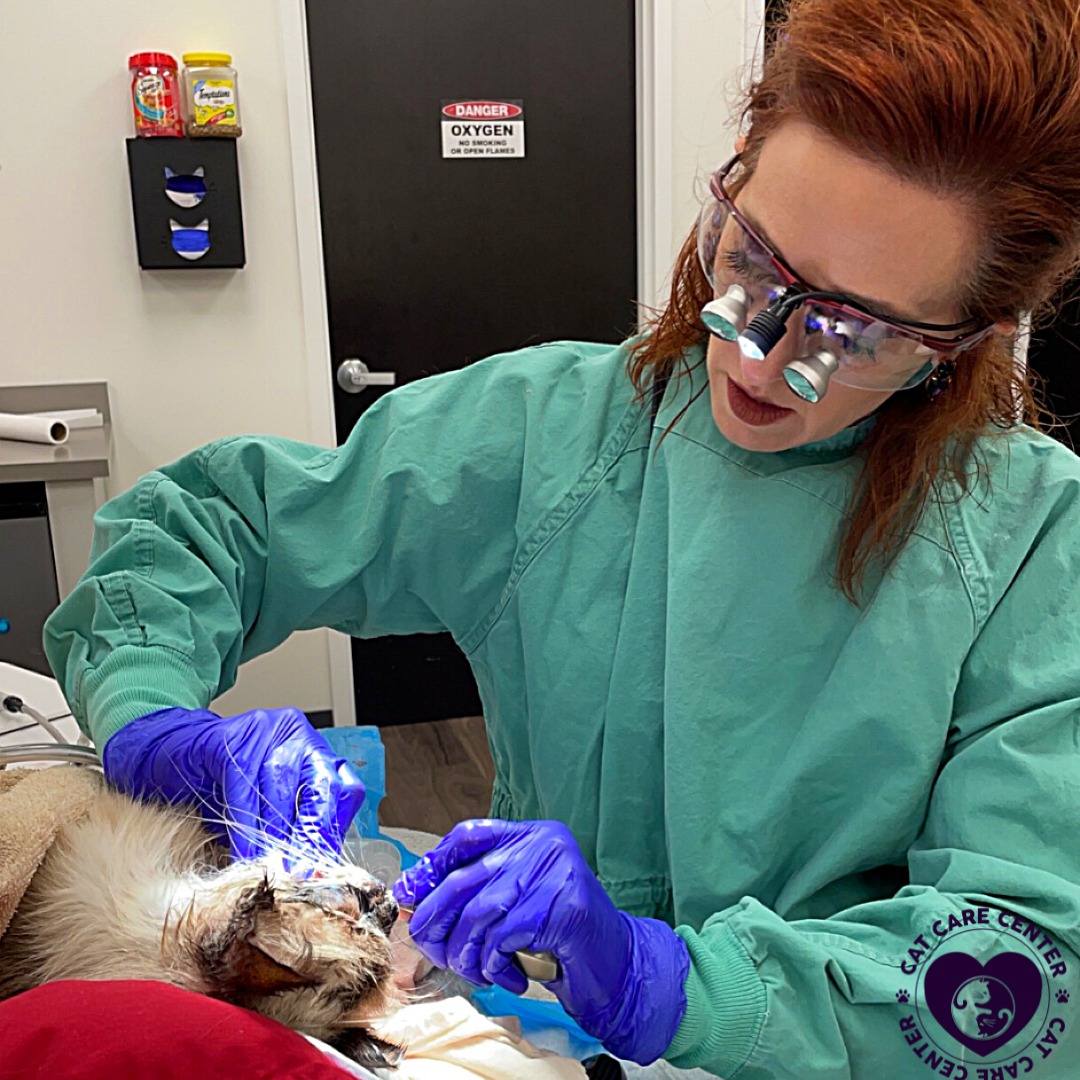
- Retained deciduous or maloccluded teeth.
- Teeth that are severely infected are always considered for extraction
- Cats that suffer from root abscess or jaw fractures may be treated with tooth extractions based on the severity
The cost of cat tooth extraction is based on the type of procedure performed, and may include hospitalization, anesthesia, pain medication, x-rays, oral surgery, and surgical supplies. At Cat Care Center, Dr. Lacie and the veterinary team understand the unique dental needs and diseases affecting cats. From state-of-the-art dental equipment to intra-oral radiograph capabilities and continuous training in feline dentistry, we are equipped and prepared to offer a unique feline experience. We will walk you through your cat's experience the day of their procedure, communicate during their time with us, and go over at-home care.
Common Cat Dental Problems
- Plaque build-up
- Gingivitis
- Periodontal disease
- Tooth loss
- Mouth sores and ulcers
- Feline Resorptive Lesions
- And, like in humans, kidney, liver, and heart disease
Cats are very adept at hiding symptoms of pain and illness. Bad breath is the only symptom of dental problems that you are at all likely to observe in your cat. If your cat has noticeably bad breath, you should schedule an exam with your veterinarian. However, in severe cases you may also notice one of the following symptoms:
- Pawing at the mouth
- Drooling
- Problems eating, loss of appetite
- Red, swollen, bleeding gums
- Loose, broken, missing teeth
- Blood in saliva or nasal discharge
- Lesions in mouth
Your cat may very well have dental issues that require attention and not be showing any of the symptoms listed above. However, if any of the above symptoms are observed, please schedule a veterinary appointment right away.
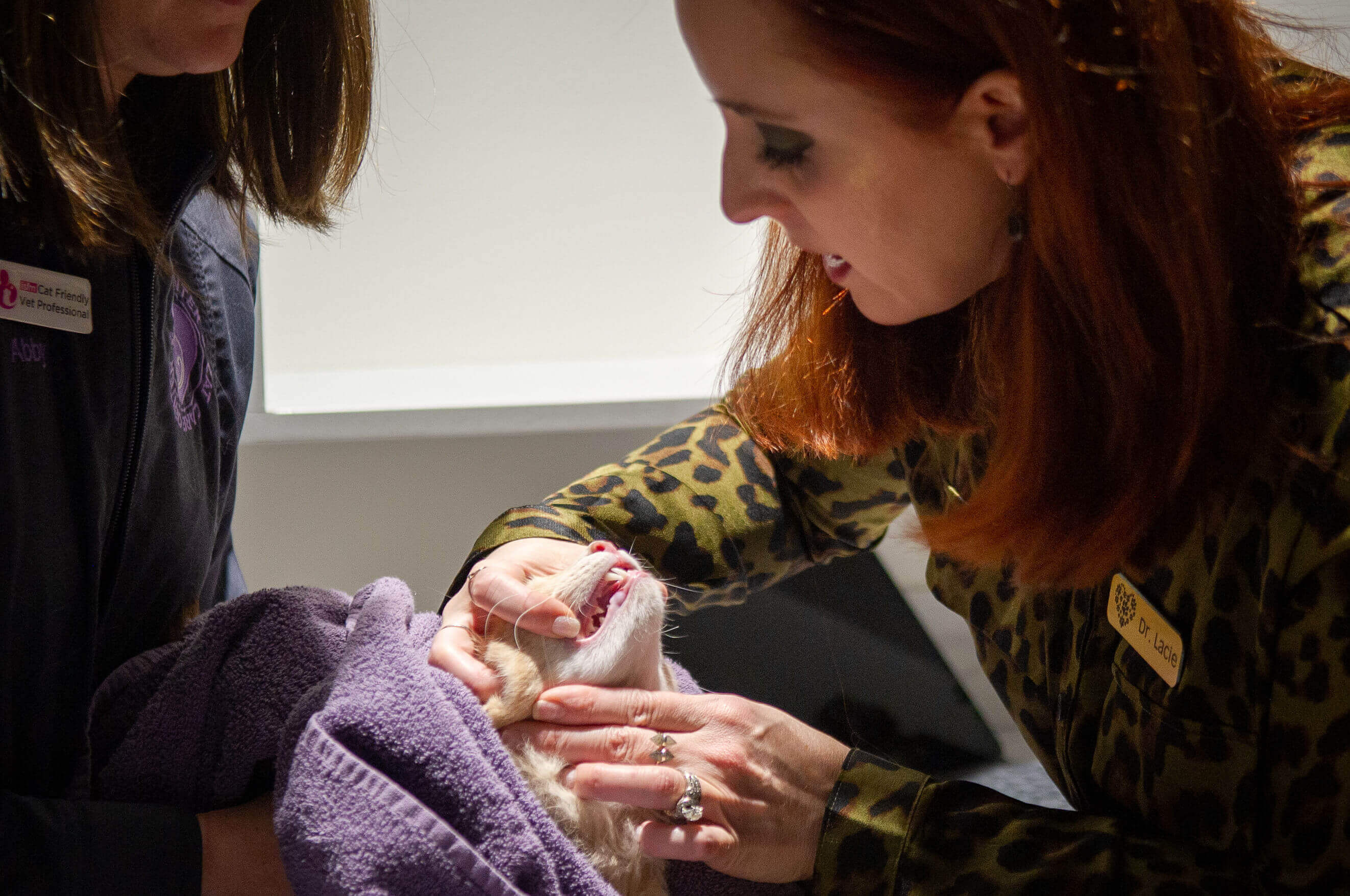
Schedule a Cat Dental Care Appointment
Scheduling a cat dental care appointment is as easy as picking up the phone or sending us an email. Our staff is here to help make your cat's trip to the dentist easy for you, while making it as painless and comfortable for your feline friend as possible.
Refer to our handouts about Cat Oral Pain and Resorptive Lesions.
